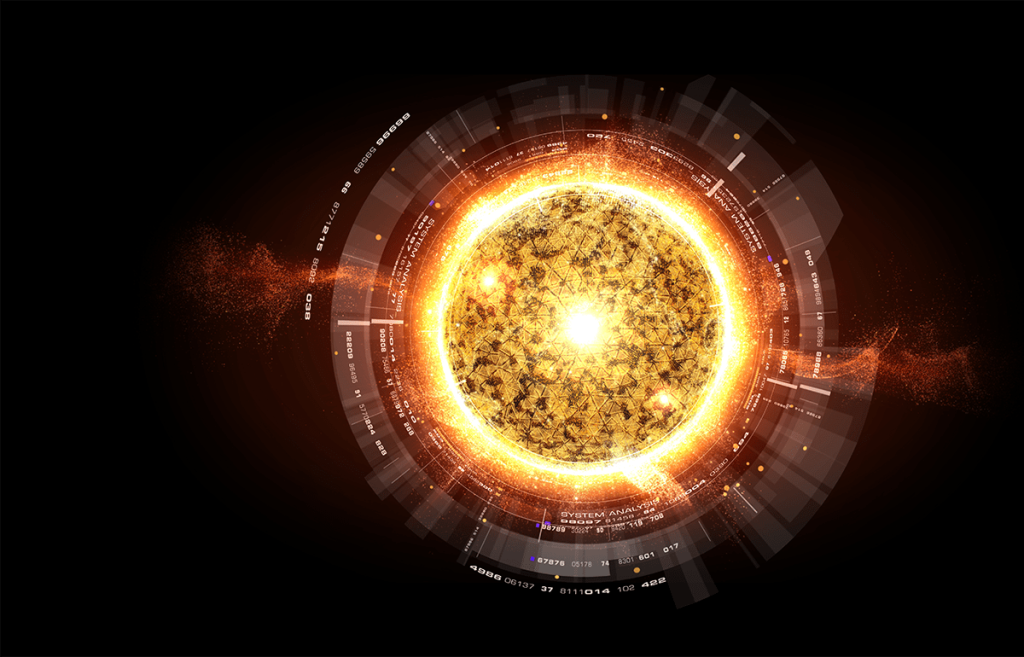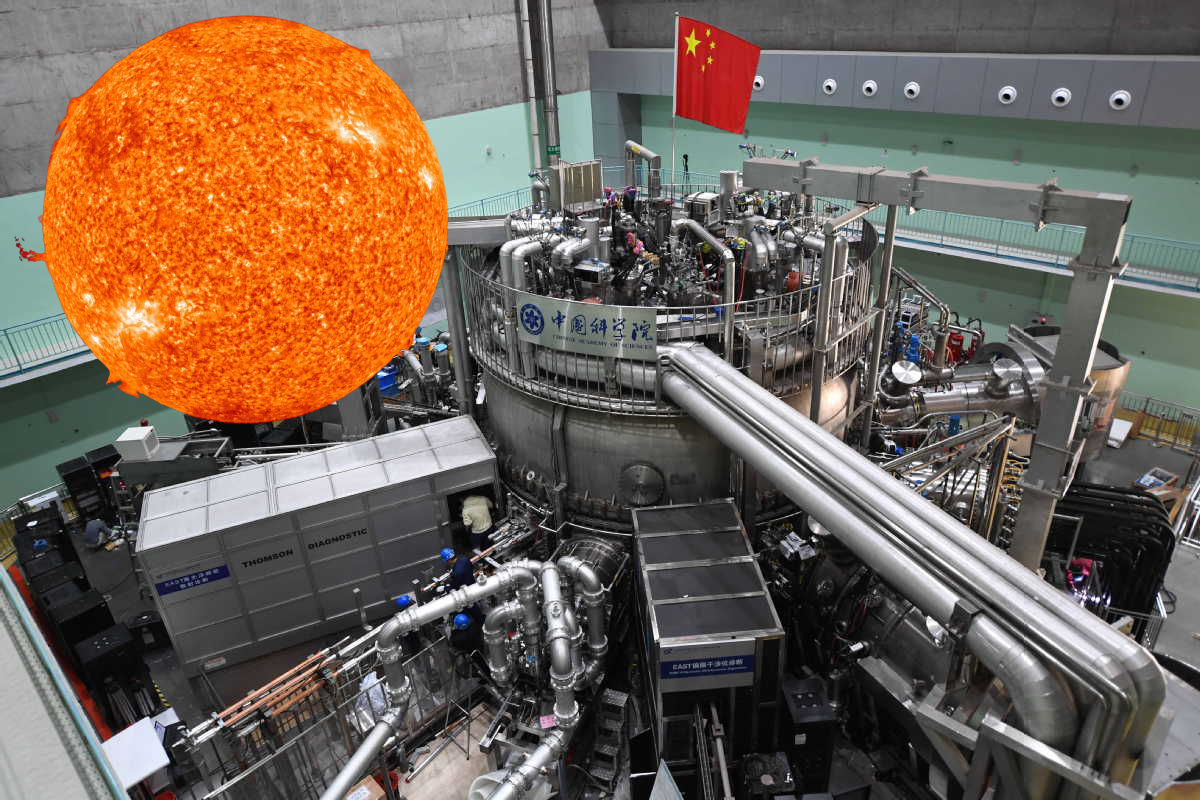 hina has made a groundbreaking achievement in the development of nuclear fusion technology with the successful operation of its trillion-dollar artificial sun. This revolutionary breakthrough could have far reaching implications for global energy markets, providing a clean, renewable and potentially limitless source of power. In this article, we will explore the history of nuclear fusion research, how China’s artificial sun works, what benefits and risks this technology offers, and what this record-breaking accomplishment means for both China and the world.
hina has made a groundbreaking achievement in the development of nuclear fusion technology with the successful operation of its trillion-dollar artificial sun. This revolutionary breakthrough could have far reaching implications for global energy markets, providing a clean, renewable and potentially limitless source of power. In this article, we will explore the history of nuclear fusion research, how China’s artificial sun works, what benefits and risks this technology offers, and what this record-breaking accomplishment means for both China and the world.
Overview of China’s Artificial Sun
China has made a groundbreaking achievement in the development of nuclear fusion technology with the successful operation of its trillion-dollar artificial sun. This revolutionary breakthrough could have far reaching implications for global energy markets, providing a clean, renewable and potentially limitless source of power. The Chinese fusion reactor is a type of thermonuclear device that uses super-hot plasma and powerful magnets to generate nuclear fusion.
This process combines two light elements, such as hydrogen or helium, at extremely high temperatures and pressures to produce energy. It has been under development since the 1950s but only recently has it reached the point where it can be used commercially.
The purpose of this technology is to create an alternative form of energy production that is both clean and renewable. Nuclear fusion produces no carbon emissions unlike fossil fuels, meaning that it would not contribute to climate change or air pollution. Additionally, the amount of fuel needed for a given amount of energy output is much less than other forms of energy production, making it cost effective in the long run. The design of the Chinese fusion reactor is based on decades of research into thermonuclear devices and magnetic confinement systems used to contain hot plasma particles at very high temperatures and pressures.
The reactor utilizes an array of powerful magnets arranged into a donut-shaped vessel known as a “tokamak” which confines the hot plasma inside while also controlling its temperature and pressure levels. In addition, various cooling systems are employed to ensure that all components remain within safe operating parameters throughout operation.
Finally, current research initiatives within China related to artificial suns are focusing on improving stability and efficiency while reducing costs associated with constructing such reactors. In addition, researchers are studying potential applications for these reactors beyond just generating electricity – from space exploration to creating new materials with unique properties not found in nature today.
This new record-breaking accomplishment marks an important milestone for China’s nuclear research program and may inspire other countries around the world to pursue similar projects in the future. Not only does this achievement demonstrate China’s technological prowess when it comes to developing advanced technologies like this one but also provides hope for a more sustainable future through cleaner means of energy production
History of Nuclear Fusion Research
Nuclear fusion research has been a major area of scientific exploration for over a century. In the 1930s, scientists first began to explore the potential of nuclear fusion and its potential applications. This early research focused mainly on understanding plasma physics and thermonuclear fusion, laying the groundwork for later advancements in this field.
The 1950s saw countries around the world begin to invest resources into studying nuclear fusion, leading to a deeper understanding of how it works and how it can be harnessed as an energy source. This period also saw groundbreaking experiments such as those conducted at Los Alamos National Laboratory in New Mexico, which demonstrated that tremendous amounts of energy could be released through controlled thermonuclear reactions.
In the 1960s and 1970s, further advances were made in plasma physics and thermonuclear fusion research due to increased investment from governments around the world. This period also saw significant work being done on magnetic confinement systems which are still used today to contain superhot plasmas.
The 1980s saw countries begin researching magnetic confinement fusion in earnest, while further development of inertial confinement fusion was seen during this time as well. Inertial confinement fusion is another form of nuclear reaction which uses lasers or other forms of radiation to achieve temperatures high enough for atoms to fuse together and release energy.
For over a century now scientists have worked tirelessly on perfecting nuclear fusion technology, resulting in China’s trillion-dollar artificial sun breaking new records today. This major milestone showcases just how far we have come since our initial explorations into this powerful technology and opens up exciting possibilities for what may come next.
How the Artificial Sun Works
The artificial sun is a revolutionary technology that could potentially revolutionize the global energy market with its clean, renewable power source. To understand how it works, it is important to understand what a tokamak is and how it harnesses energy from hydrogen isotopes.

A tokamak is a doughnut-shaped device made of metal walls that contain the super-hot plasma needed for the process of nuclear fusion. This plasma consists of two different hydrogen isotopes: deuterium and tritium. When these two isotopes are combined, they form helium and create an enormous amount of heat in the process. This heat can then be used to generate electricity. Additionally, powerful magnets help keep the plasma confined within the tokamak walls, ensuring that no damage can occur outside of it due to the extreme temperatures inside.
The Chinese Academy of Sciences is researching ways to make this artificial sun even more efficient and cost-effective so that it can become an even more viable option for clean and renewable energy sources. For instance, they are looking into ways to reduce or eliminate impurities in the plasma and using innovative techniques like high-temperature superconducting magnets for greater stability during operation.
This trillion-dollar artificial sun marks a major milestone in China’s nuclear research program and has opened up exciting possibilities for what may come next on a global scale. It showcases the progress made in nuclear fusion technology and could inspire other countries around the world to pursue similar projects in order to meet their own energy needs through clean and renewable sources.
Benefits and Risks of This Technology
China’s trillion-dollar artificial sun has the potential to revolutionize the global energy market, providing a clean and renewable power source with limitless potential. This technology could be used in a variety of applications such as space exploration, medical research, and weaponized nuclear fusion. While it could bring great benefits to society, there are also some concerns about the safety of the technology and its potential for military use.
The benefits of this technology are clear: clean energy with no pollutants or harmful emissions. It is also incredibly cost-effective compared to traditional fossil fuels and other sources of energy. Additionally, it could offer an alternative to non-renewable resources that are increasingly expensive or scarce.
Despite these advantages, there are still some risks associated with China’s artificial sun. For one thing, the technology is still in its early stages of development and requires significant investment to reach maturity. There is also a concern about possible accidents if not operated safely or properly maintained. Furthermore, the proliferation of this technology could lead to weaponization for military purposes which would have serious implications for global security.
Ultimately, despite these risks and uncertainties, China’s record-breaking accomplishment may inspire other countries to pursue similar projects in the future. The potential for clean energy on an unprecedented scale may be too tempting for many nations to pass up given its promise of economic prosperity and environmental sustainability.
What This Record Achievement Means for China and the World
China’s recent success in creating a sustained artificial sun is a groundbreaking accomplishment that could revolutionize the world of energy production. This technology could create an infinite, clean source of renewable energy, as well as open up lucrative opportunities for Chinese businesses in many industries. Beyond its economic and strategic implications, this feat also has major potential applications outside of China, ranging from providing abundant electricity to powering spacecrafts on interplanetary missions.
Not only does the successful completion of this project showcase China’s engineering excellence but also its commitment to greener and more sustainable technologies for the benefit of all humanity. If other countries are able to replicate this achievement with their own fusion reactors, it would mean a major step forward towards finding cleaner alternatives to traditional sources of energy like coal and oil. It could even encourage greater investment into nuclear fusion research worldwide – potentially leading us closer to achieving limitless clean energy on a global scale.
The trillion-dollar artificial sun experiment has been an invaluable learning experience not just for China but also for all nations; it offers us a glimpse into our future and highlights how we can use science and technology to better our world by making it more efficient and sustainable. With this breakthrough comes great promise for what may come next in terms of global energy production – one that will be beneficial not only economically but environmentally as well.
Avid Writer with invaluable knowledge of Humanity!
Upcoming historian with over 30 million views online.
“You make your own life.”





